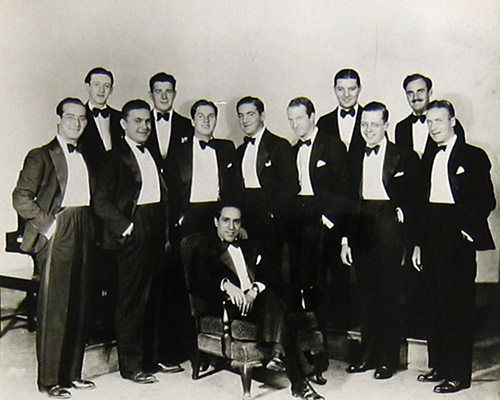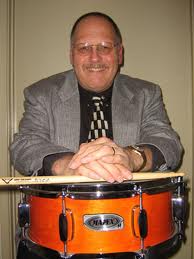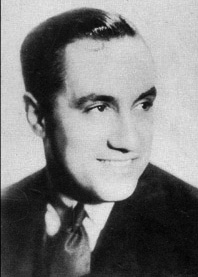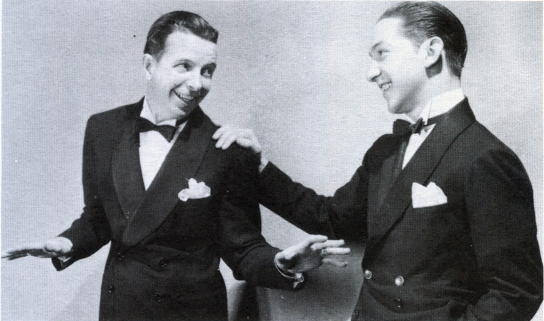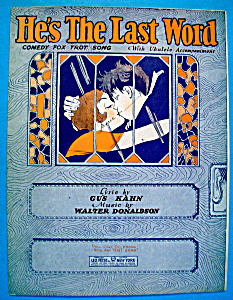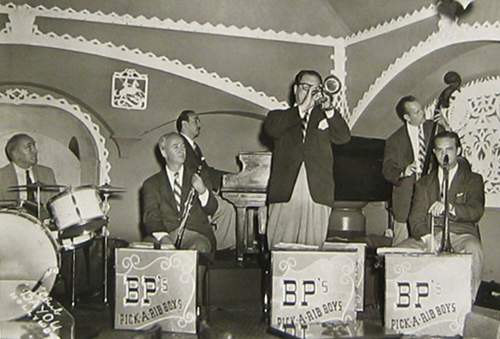Ben Pollack was an innovative drummer, made numerous recordings and led some of the hottest dance bands of the 1920s and 30s. In spite of his many contributions, Pollack remains largely overshadowed by swing era jazz stars like Jimmy McPartland, Benny Goodman, Jack Teagarden, Harry James and Glenn Miller who received big breaks from Pollack when they were still virtually unknown.
Today we hope to tip the scales as we explore the musical legacy of this often overlooked jazz man. Drummer Hal Smith joins host David Holt to talk about Ben Pollack's contribution to jazz.
Ben Pollack got his first break in the music business at a basement nightclub in the Chicago Loop. Heavily influenced by African American jazz men like King Oliver, the New Orleans Rhythm Kings created a buzz playing hot jazz and blues on the white side of town in 1922. Ben was a young 'up and comer,' soaking it up from a ringside seat at the Friar's Inn when an invitation to sit in with the Rhythm Kings led to a full time job with the band. It was during his stint with the NORK that Pollack's playing style was shaped. He once described early white jazz drumming as "Just a lot of jumping around and throwing sticks."
By his own admission Pollack played 'showy drums' at first, saying that "novelty in a drummer was still the thing, so I thought up some stunts that I thought were the nuts. But one night an M.C. asked me to leave out all the fancy stuff when I played the show because it confused an act. So I just played rhythm, and the guys were so amazed with the easy way they could swing they wanted more drumming like it. So I discovered the secret of solid drumming, that is, to feed rather than overshadow, to send the other guys rather than play a million different beats."
Ben Pollack went on to lead some of the hottest early jazz bands in Los Angeles and Chicago. In 1928, the Pollack ensemble (by now a large orchestra) relocated to New York City and a job at the Little Club. More jazz-luminaries-to-be came on board when Jack Teagarden replaced Glenn Miller and Bud Freeman augmented the reed section. While riding high with a gig at the Park Central Hotel, Pollack turned the drum chair in his group over to Ray Bauduc. Motivated by a desire to be in the spotlight and urged on by the success of baton-waving bandleaders of the day, Pollack decided to conduct his orchestra out front rather than from behind the band in the rhythm section. The era of star drummers like Gene Krupa and Chick Webb leading their bands to fame and fortune while positioned at their drum kits was still far off in the future.
Despite the all-star personnel, steady work and numerous recordings, personality conflicts began to emerge as freewheeling sidemen challenged Ben Pollack's strict, disciplinarian approach to band leading. As some personnel left, yet even more great jazzmen joined the ranks of Pollack's orchestra. In and era of big band arrangements where every note was written out, top players were drawn by Pollack's reputation for playing hot jazz and giving his men room for their own solo improvisations. In the early 1930s, the orchestra included Eddie Miller and Babe Russin (saxes), Matty Matlock (clarinet),Yank Lawson, Charlie Teagarden, Sterling Bose and Charlie Spivak (trumpets) and Nappy Lamare (guitar).
However, ongoing personality clashes led to a mutiny in December, 1934, when his entire band quit to form the nucleus of what would become the Bob Crosby Orchestra. Pollack never recovered from the shock and hurt engendered by the walkout.
Even though he was accorded the sobriquet "Dean of Sophisticated Swing," the Swing Era was not a happy time for Ben Pollack. He watched his former sidemen become well-paid celebrities in the orchestras of Bob Crosby, Benny Goodman and Glenn Miller as he struggled to keep his own big band afloat. He sued Crosby, Goodman and others over what he considered stolen musical arrangements, but his case was thrown out. Gradually he bowed out of the band leading business.
Though Pollack reemerged as a bandleader following an appearance at the 1949 Dixieland Jubilee in Los Angeles, success continued to elude him and his bitterness and dejection increased. Sadly, he took his own life in Palm Springs on June 7,1971.
Fortunately for us, his musical legacy survives. Though Ben Pollack's name is remembered by only a few, his pioneering contribution to jazz drumming can still be heard on his many recordings and in the work of players today who revere the beauty of solid timekeeping—"of sending the rest of the band rather than playing a million different beats."
Photo credit for Home Page: Drummer bandleader Ben Pollack. Photo courtesy 123nonstop.com.
Text based on Riverwalk Jazz script by Margaret Moos Pick © 2011


